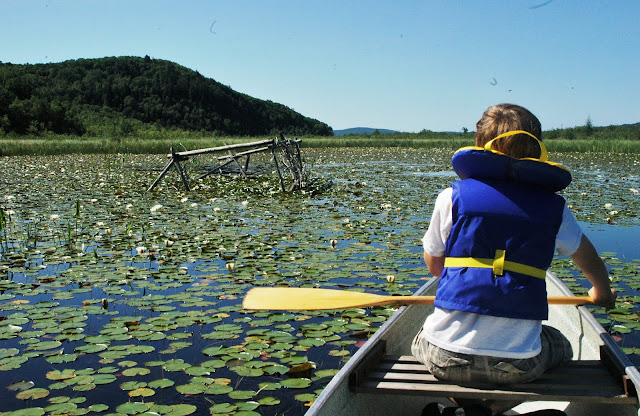After checking out the duck blind, and about ninety minutes on the water, we turned around and began to head back to our put in at Mayhew Landing. Unfortunately, nothing of the scene depicted in Casson's painting could be identified specifically, however the painting had a number of elements that we did see examples of on our paddle. We covered about one-third of the length of the Marsh, so it is quite possible the scene depicted was at the western end, somewhere near where the York River enters the marsh, as we have entered via the Little Mississippi, and I could not recognice the scene there either.
Noodling through the grasses and lilypads, looking north toward the hill at Craigmont, the location of an old corundum mine.
Very little of the land bordering the marsh is privately owned, virtually all is crown land, except for this obvious location,
A close up view of the blight on the landscape. A more thoughtful owner could have done a better job clearing
Rudi looking back as we head toward Negeek Lake and the take out.











